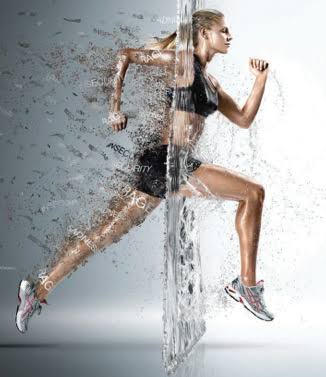Fitness Advertisements and the Power of User-Generated Content
Fitness advertisements today go beyond traditional promotional materials. With audiences becoming increasingly skeptical of highly polished, corporate-created ads, marketers are shifting towards a more authentic, engaging approach—leveraging user-generated content (UGC). UGC consists of content created by real customers, including videos, photos, reviews, and social media posts. Incorporating UGC into your fitness advertising strategy can significantly boost engagement, trust, and overall campaign effectiveness.
Why User-Generated Content is Essential for Fitness Advertising
In the world of fitness ads, authenticity matters more than ever. Consumers resonate deeply with real-life stories, transformations, and relatable fitness journeys. Fitness advertisements featuring genuine user experiences often outperform conventional promotional ads because they carry emotional credibility. Unlike traditional advertising in gyms, UGC highlights personal achievements and genuine endorsements, enhancing your brand’s relatability and trustworthiness.
The Authenticity Advantage in Fitness Ads
One of the key advantages of incorporating UGC into fitness advertisements is authenticity. Ads in gyms often showcase idealized images of fitness models or exaggerated results, which can intimidate or alienate everyday consumers. On the other hand, fitness ads created from authentic user experiences show achievable results and realistic scenarios, increasing trust and motivating viewers more effectively.
Building Community through Fitness Advertisements
Fitness advertising driven by UGC fosters community spirit among consumers. When individuals see themselves represented through real-life testimonials and shared experiences, they feel connected and validated. Brands utilizing user-generated fitness ads can transform casual customers into loyal advocates, amplifying their marketing reach through organic sharing and word-of-mouth.
How to Implement User-Generated Content in Fitness Advertisements
Integrating UGC into your fitness advertising strategy requires thoughtful planning and execution. Here’s how to effectively harness user-generated content:
Step 1: Encourage Your Audience to Share Their Journey
Invite your gym members or customers to share their fitness journey on social media using specific branded hashtags or tagging your company’s official account. This approach creates a continuous stream of potential content for fitness ads while boosting your social media presence.
Step 2: Curate and Showcase Real-Life Successes
Carefully select the most engaging, motivating, and authentic pieces of content. Highlight these on your website, social media pages, and in physical advertising in gyms. Displaying these real-life examples prominently validates your marketing message and encourages others to share their stories.
Step 3: Use UGC Strategically in Advertising in Gym Environments
Gyms offer a natural, captive audience for your advertisements. By using digital screens or physical posters showcasing real member experiences and transformations, you create relatable, impactful advertising in gym spaces. An ad in gym settings featuring real people from that very community significantly increases engagement and credibility.
Step 4: Incorporate User Stories in Targeted Fitness Advertising
Integrate powerful user-generated stories into broader fitness advertising campaigns, including digital ads, social media promotions, and local community events. Featuring user-generated fitness ads on various platforms ensures cohesive messaging and maximizes overall campaign reach and impact.
Examples of Successful Fitness Advertisements Using UGC
Example 1: Social Media-Driven Gym Campaigns
One prominent gym chain successfully utilized a hashtag-driven campaign encouraging members to post their fitness transformations online. The resulting fitness ads, populated entirely by real user experiences, drastically outperformed previous traditional ads in terms of engagement and new membership sign-ups.
Example 2: Real Stories, Real Results
A fitness equipment brand ran a campaign featuring short videos of customers using their products in real, everyday settings. This UGC-driven fitness ad approach provided authenticity, directly influencing consumer decisions and significantly boosting sales.
Challenges and Solutions for Implementing UGC in Fitness Ads
While user-generated content offers significant advantages, marketers must address certain challenges:
Challenge 1: Ensuring Content Quality
UGC may vary widely in quality. Marketers must carefully curate content to maintain professional standards in fitness advertising. Solutions include providing clear guidelines for submissions and selectively editing or branding content before sharing widely.
Challenge 2: Securing Proper Permissions
Always obtain explicit permissions from users to feature their content in fitness ads. Clearly communicate the terms and conditions related to content usage to avoid misunderstandings or legal issues.
Challenge 3: Maintaining Consistency
While authenticity is key, maintaining brand consistency in your fitness advertisements remains critical. Develop clear guidelines and examples to ensure that all user-generated fitness ads align with your brand identity and marketing strategy.
The Future of Fitness Advertisements: Empowered by User-Generated Content
User-generated content is not merely a passing trend—it’s a significant shift in how fitness advertising connects with audiences. By embracing authenticity and leveraging real-life experiences, fitness advertisements built on UGC can effectively drive consumer engagement, loyalty, and overall marketing success.
Incorporating user-generated content in your advertising strategies not only highlights genuine customer experiences but also creates an authentic community-driven atmosphere. As the fitness market continues to evolve, brands that adapt and innovate through UGC-driven fitness ads will be best positioned to succeed.






